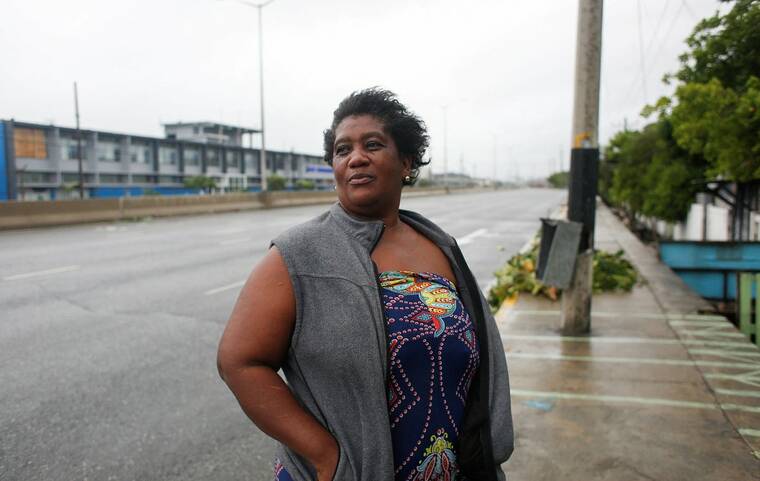Copyright staradvertiser

Hurricane Melissa threatened catastrophic winds, deadly floods and landslides on Jamaica’s southern coast this morning, nearing landfall as a Category 5 storm with 185 mph winds, only 5 mph short of the most intense Atlantic hurricane on record. The storm’s intensification — with sustained winds stronger than those of Hurricane Katrina at its peak — came with dire warnings from officials. “Jamaica, this is not the time to be brave,” said Desmond McKenzie, the minister coordinating disaster response. “Don’t bet against Melissa. It is a bet we can’t win.” He urged people to go to shelters in places affected by mandatory evacuation orders. “There is still a small window of opportunity,” he said. “Let us see if we can use it wisely.” Forecasters for the U.S. National Weather Service made a similar warning to people in the hurricane’s path, saying this was the “last chance to protect your life.” More intense than the Category 5 strength of Katrina, which pummeled New Orleans in 2005, Melissa is now the fifth-strongest hurricane on record in the Atlantic. The National Hurricane Center in Miami predicted Melissa would make landfall this morning. Jamaica’s capital, Kingston, is out of the direct path of the storm, but rain and wind were lashing windows, and the streets were mostly deserted. The winds in Melissa’s eyewall are so strong that they could cause “total structural failure” and widespread power and communication outages, the hurricane center said Monday. At least three people have died in connection to preparations for the storm, and 13 others were injured, officials said. Forecasters were predicting rains measured in feet, not inches, for Jamaica and other Caribbean nations this week. Despite their warnings about destructive winds, rain and floods, officials in Jamaica were worried that not enough people were heeding evacuation orders. Officials had anticipated that the storm would displace about 50,000 people. But by Monday evening, only about 1,700 had evacuated to shelters, said Desmond McKenzie, Jamaica’s minister for local government. Jamaica, a small country that depends on tourism for about a third of its annual revenue, has limited resources to prepare for devastating storms, according to disaster and emergency preparedness experts. Here’s what else to know: — Tracking the storm: Strengthened by Caribbean water temperatures far warmer than usual, Melissa is expected to remain an intensely destructive force throughout the next few days as it passes through the Caribbean, while bypassing the United States. — Regional preparations: Nearly 900,000 people have been ordered to evacuate Cuba’s eastern provinces. The U.S. Navy has completed the evacuation of about 1,000 nonessential personnel from its base at Guantánamo Bay and moved out of the storm’s path eight U.S. Navy warships deployed to the Caribbean as part of a Trump administration campaign against drug traffickers. — Staff shortages: National Weather Service data-gathering and updates continue despite the U.S. government shutdown, because they are considered essential for public safety. But the weather service is already operating at reduced staffing after the Trump administration slashed the number of employees at many of the agencies traditionally responsible for planning for and responding to natural disasters. — Limited donations: The World Food Program has positioned 450 metric tons of food in Haiti in advance of the hurricane — a fraction of the amount that the United Nations agency normally has on standby in a natural disaster there, it said. The agency is financed by donors, many of which have shifted priorities to the Gaza Strip and Ukraine. This article originally appeared in The New York Times. © 2025 The New York Times Company



